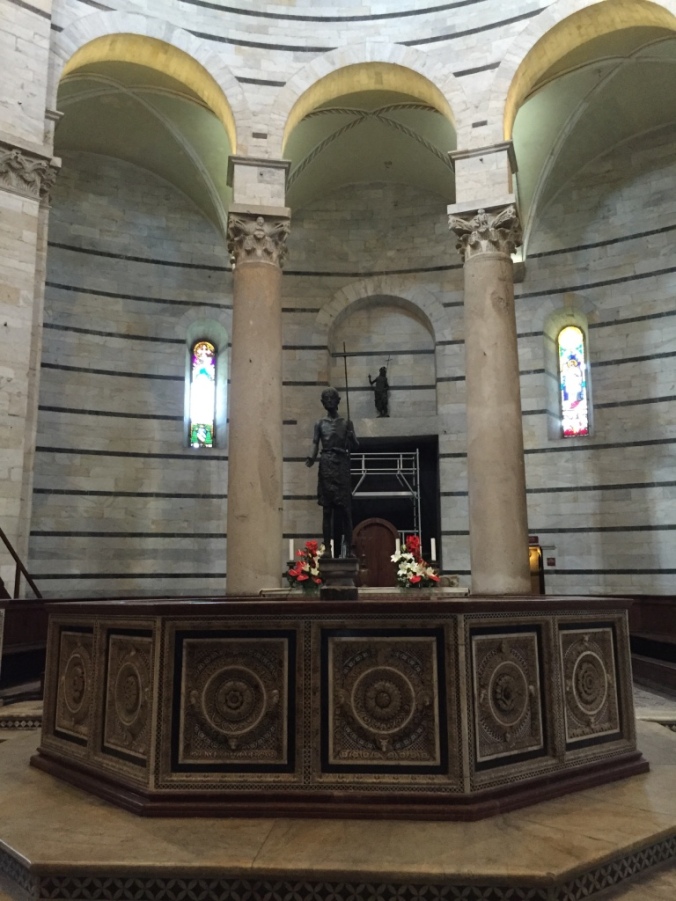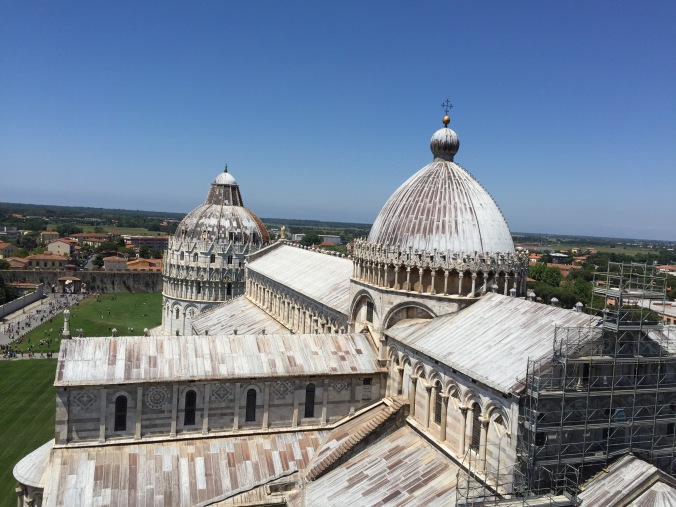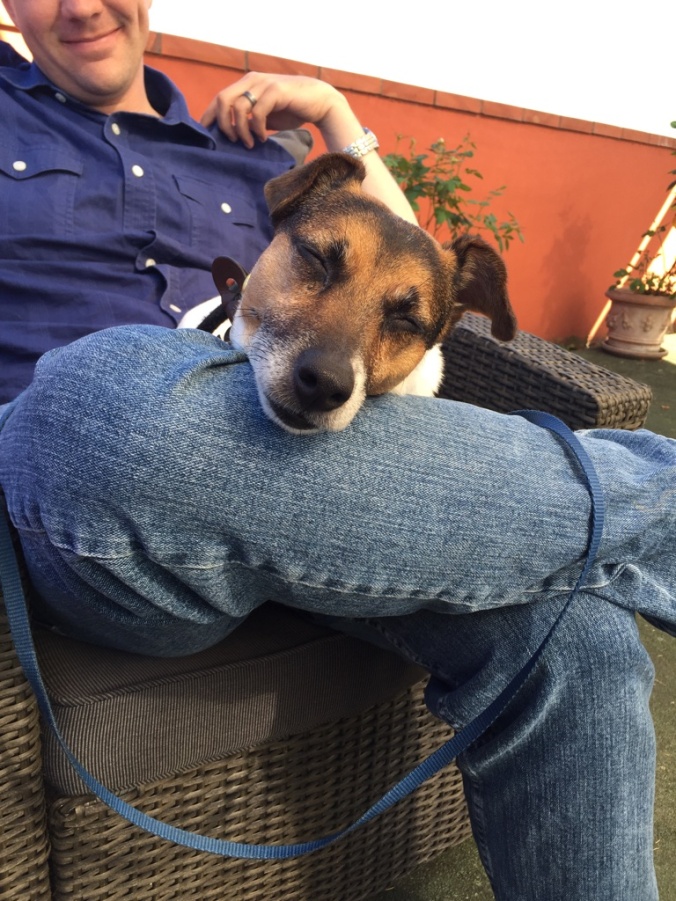Not long ago, we took our second weekend trip. This time, we went to the northern edge of Tuscany where we saw Pisa and Lucca. It took over five hours to drive up there, but it was worth it.
Instead of staying at a bed and breakfast, we decided to stay in an agriturismo. Agriturismos are small farms here that also rent out rooms to visitors. The Italian government regulates who can and cannot call themselves an agriturismo, the prime requirement being that the owners must be actual farmers. If it’s just an old farmhouse but no one grows anything anymore, it’s not an agriturismo. 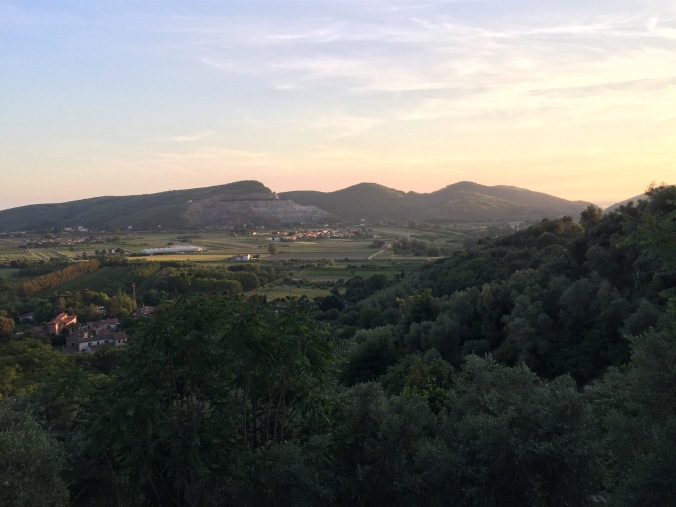 The view from right outside our room.
The view from right outside our room.
We stayed at Agriturismo Il Leopoldino, situated right in between Pisa and Lucca, and up a pot-hole ridden gravel road that challenged our poor little Prius on every journey to and from.
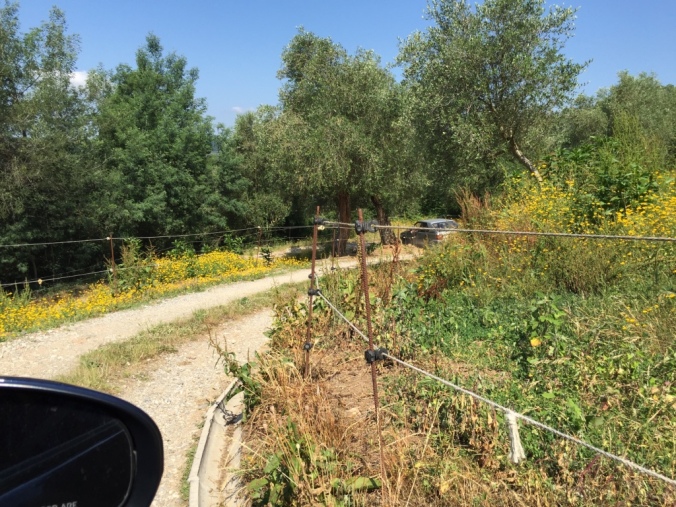
The woman who runs the agriturismo, Arianna, warmly welcomed us to her home, and her son quickly became good friends with Max and Roscoe. Her husband Giulio works at a winery down the road. On the premises they also own animals, have a vegetable garden, and make their own olive oil. 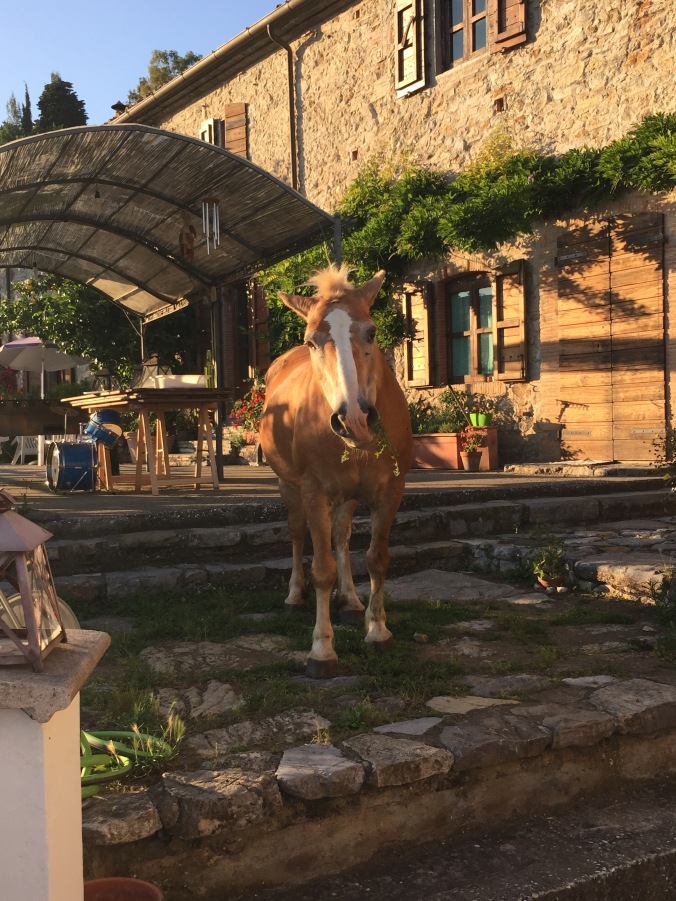 Benny the horse surprised us one evening as we were eating dinner and enjoying the fresh air. Roscoe wasn’t exactly a fan.
Benny the horse surprised us one evening as we were eating dinner and enjoying the fresh air. Roscoe wasn’t exactly a fan.
After a good night’s sleep, we set off for our second adventure (the first being the drive up the road to find their farm)—Pisa! We told you that Montepulciano was a bit touristy, but that was in the sense that it was staged nicely for tourists. Pisa is touristy in the same way that Times Square is. It draws visitors from all over the world, there are people selling knockoff fashion items in the street, and there are street hustlers looking to finagle some Euro from you. In fact, we decided to hedge our bets with the parking lot hustler and donated a euro to his cause in hopes he would keep an eye on our car and not break the windows himself.
The city of Pisa is, for the most part, an unremarkable college town that doesn’t stand out much from other Italian cities. The site where that description falls apart is the Field of Miracles. In one giant lawn, you can see Pisa’s three main attractions: the baptistry, the duomo (Cathedral), and the tower.
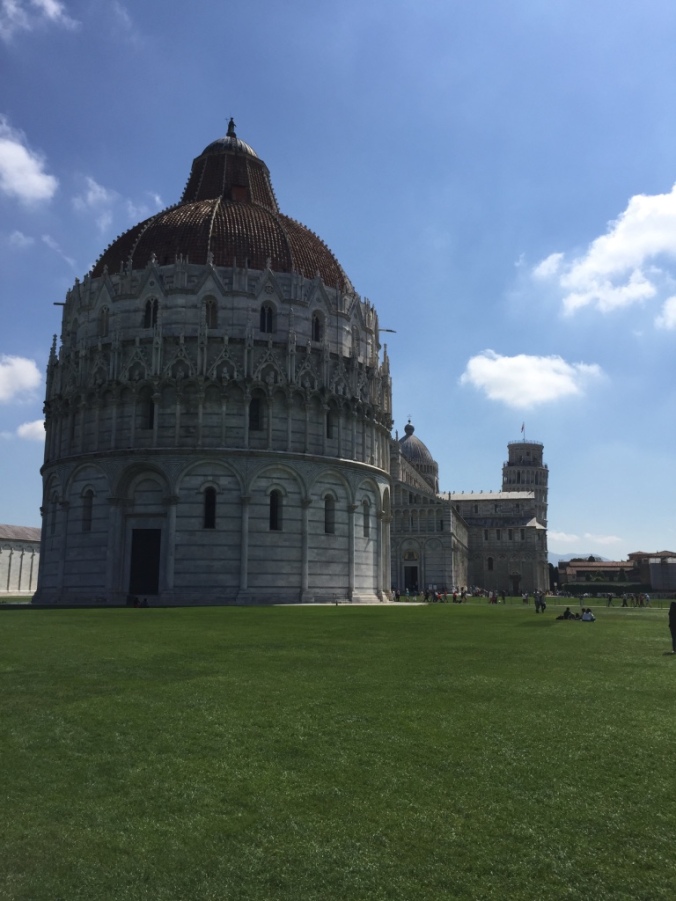
In the foreground, the baptistry. Behind it, the duomo, and poking out behind that, the tower.
The Pisa cathedral is a magnificent structure that serves as the final resting place for the Saint Raneiri and the Holy Roman Emperor Henry VII.
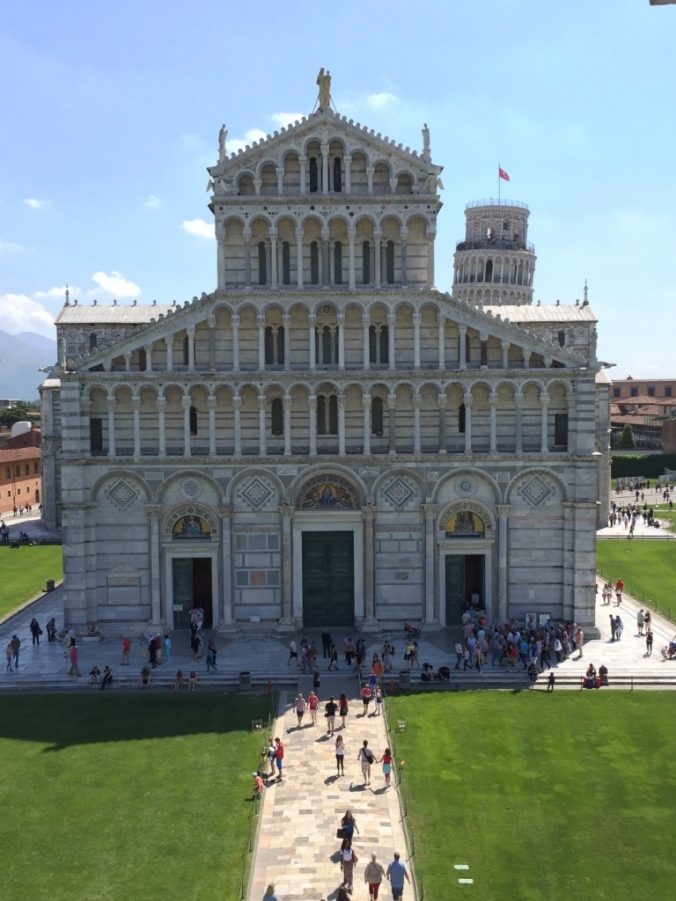
The cathedral is one of the busier duomos we’ve seen, in that there is a lot to take in no matter where you look. Art, sculptures, and striped marble columns compete for your eye no matter where you go.
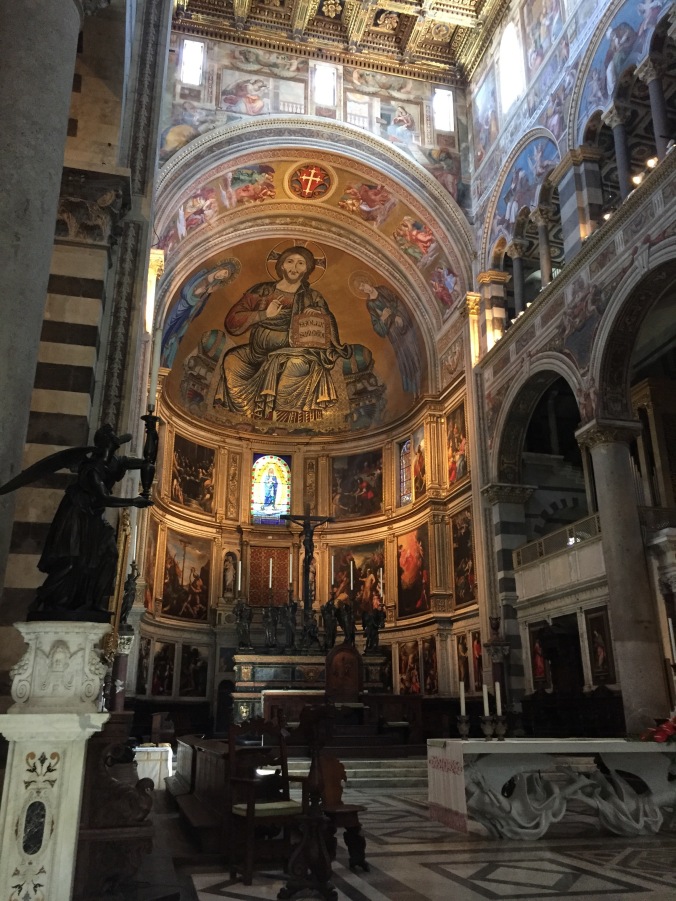
The second attraction is the baptistery for the cathedral, needed because back in the day only baptized people could enter a church. It has pretty amazing acoustics, as a powerful enough singer can perform multi-part harmonies by himself or herself thanks to how long notes sustain.
A rather scrawny representation of John the Baptist.
The final big attraction is the cathedral’s bell tower, which if you look closely enough (and you really have to concentrate on this one) you can see that it happens to tilt over a little bit.
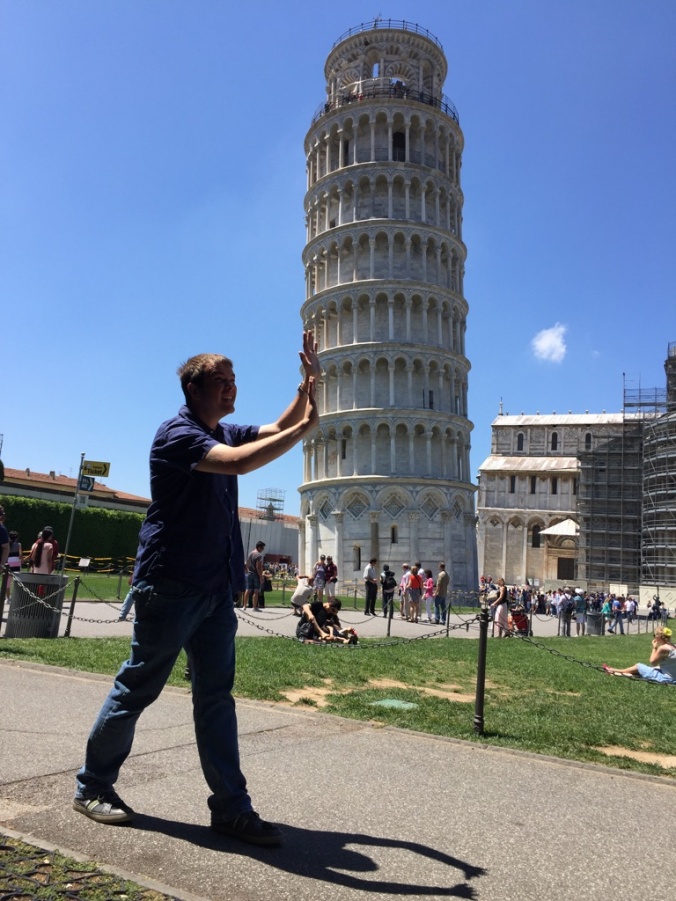
The obligatory “pushing the tower back over” picture.
The Leaning Tower really does look like it should fall over. It’s hard to get a picture that adequately shows how freaky it looks in person. Part of it is that the tower began to lean after only the first three floors were complete, and so the builders made the upper floors taller on one side than the other to try to help stabilize the structure. To fully appreciate the lean, you have to stand at its base and only look at the base. 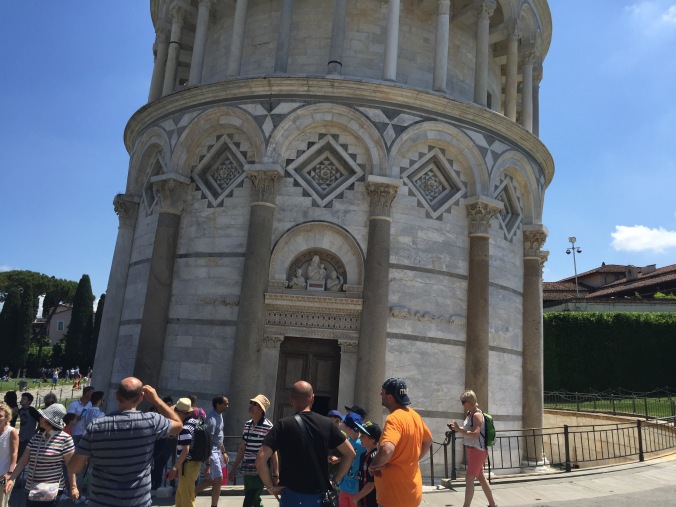 The door to get inside.
The door to get inside.
When you climb the tower, you can really feel the lean as you go up. There is a short part near the bottom where, as you go up, it almost feels like you’re going level or even downstairs despite what you’re actually doing. No picture from the top really shows off the lean, but it does offer nice views of the other buildings.
All in all, Pisa did not disappoint, despite its Disney World type feel.
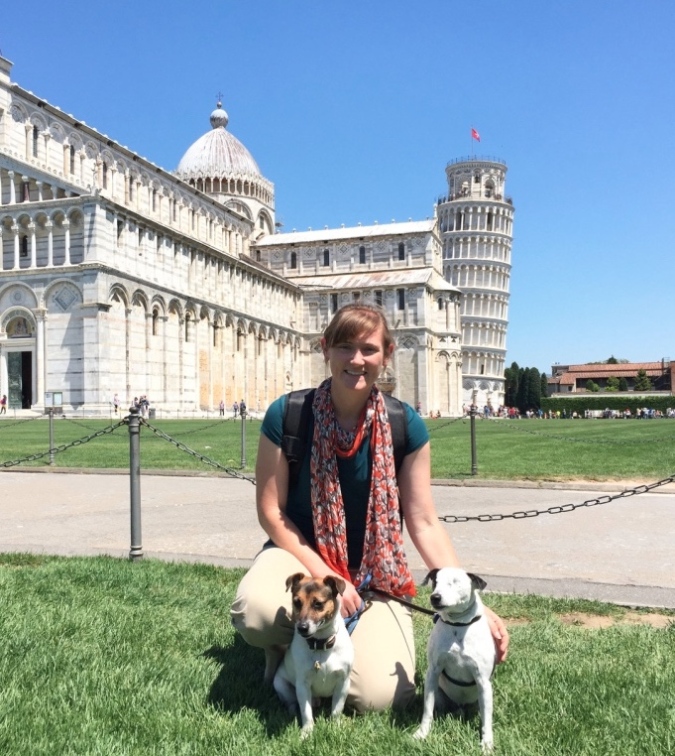
After leaving Pisa, we went to Buonamico (in English, “Good Friend”), a winery that sits just to the west of Lucca. It wasn’t as unique as the one we went to at the end of the Montepulciano trip, but it was still an interesting place.
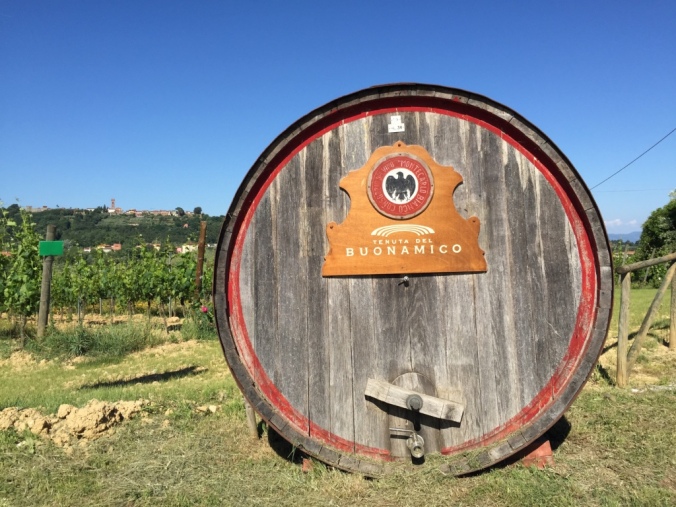
It made its own olive oil as well, which is common for the region. The owners of the place were from the family of Filipo Berio, as in the olive oil you can buy in any grocery store in America, but it had stopped being a supplier for the company sometime in the last 20 years. We didn’t buy any of their oil because, no surprise here, it basically tasted like the standard grocery store oil you’d get from Filipo Berio. It was still a relaxing event for all involved.
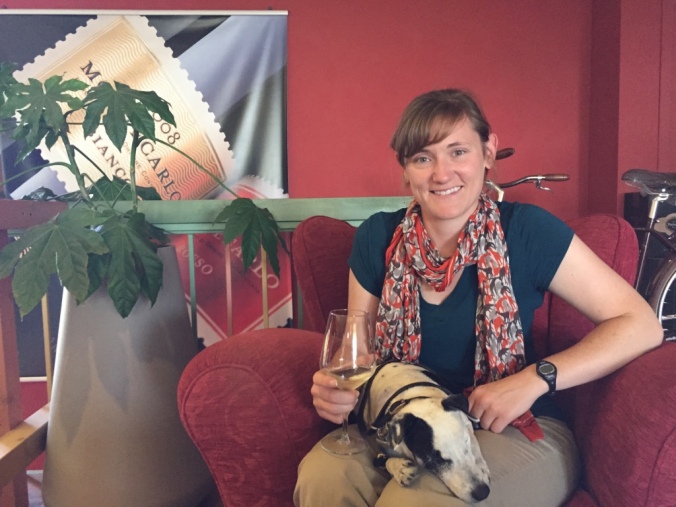
Especially the canines…
On Saturday we went into Lucca. It’s bigger than Montepulciano, and by the time we got there, it was much busier too as tourist season is upon us. Its claim to fame is that it is well preserved and has its Renaissance walls intact thanks to skilled diplomacy that kept it out of any wars since before those walls came to be. The top of the wall is now a park, and we walked some of it to start the day. It is known for being car free and being a place where you rent bicycles to get around, but it had no fewer cars than Montepulciano did.
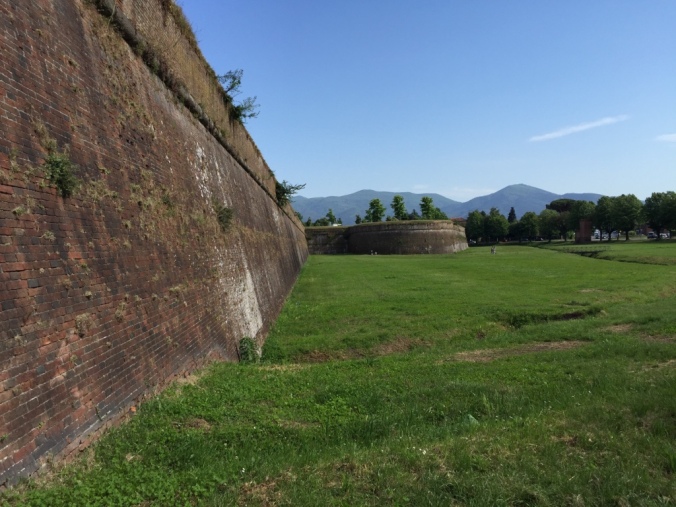
The next thing we did was visit the church of San Giovanni. It’s no longer a working church; any art that can be removed has been, and now it mainly serves as a concert hall for the music of Puccini, Lucca’s most famous citizen. What makes it special is that the church was built in the 1200s over a church from the 700s, which was built over an older church from the 400s, which was built over a Roman structure from the 200s, which was built over another Roman structure from the first century B.C.
Got that? A church built on top of a church, built on top of another church, which happened to be built on top of an old Roman structure which was built on top of an even older Roman structure, originating from a time before Jesus was born.
You can walk through the excavations underneath the floor of about a third of it, and colored markers show you which aspects belong to which periods.
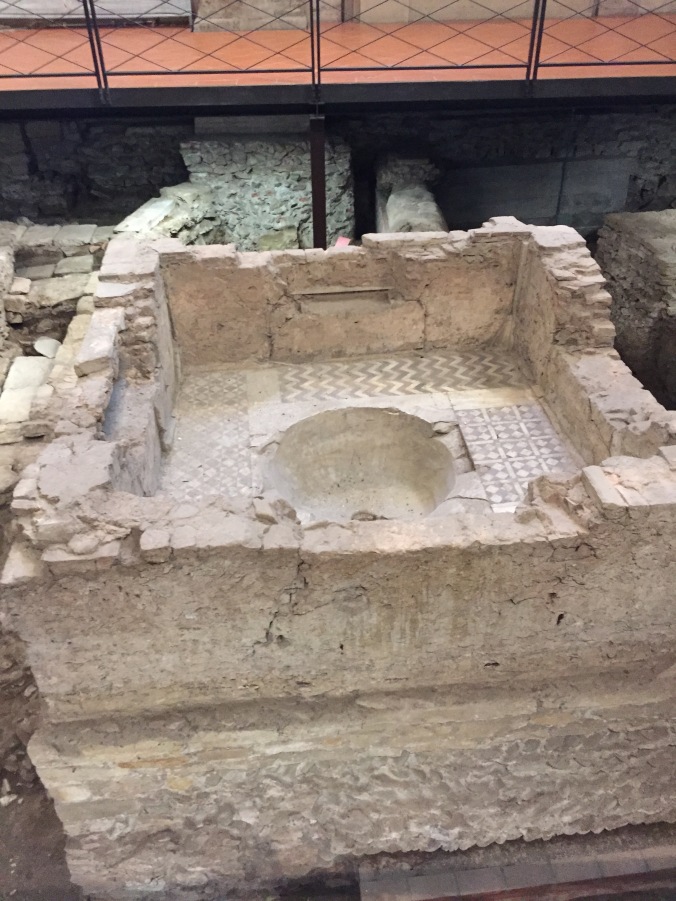 This is the baptistery of the church from the 400s.
This is the baptistery of the church from the 400s.
We hit a few other highlights of the city. The Torre Guinigi was one of them. Aristocratic families used to build towers in their homes to climb up for security, and that one is the only one left in the city. It has trees at the top, making it unusual for similar surviving towers in the country.
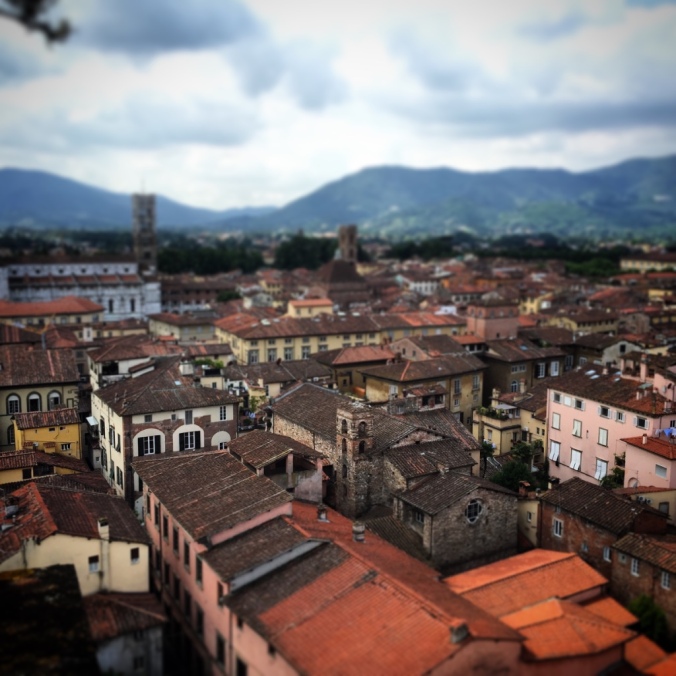
I know, once you’ve seen one bird’s eye view of an ancient Tuscan village, you’ve seen them all…
We strolled up Via Filungo, the main shopping street in the city. We also saw Piazza Anfiteatro, which was once a Roman amphitheater but now only retains the oval shape.
That night we finished back at the agriturismo where Arianna made us a delicious dinner in the typical Tuscan style.
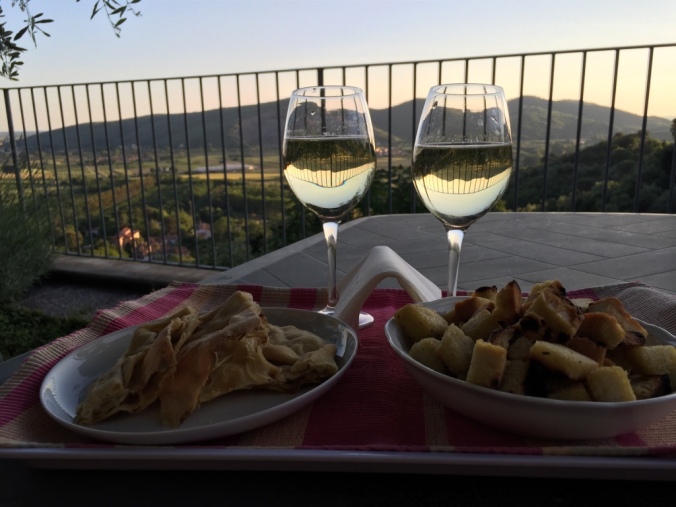
Antipasto enjoyed with her husband’s wine and the beautiful view.
We ate in the family dining room as she cooked the courses and chatted with us. It felt like being a part of an Italian family to stay there. The next morning we shared breakfast with our host’s four other guests, a couple from Germany and another couple from Northern Italy. We did the best we could in communicating in our three different languages, but basically discovered two things: the German couple thought Italian breakfasts were far too sweet, and the Italian couple thought Napoli is the craziest city in Europe and never want to visit.
After our “dessert” breakfast and lamenting on the downfalls of Naples, the six of us followed Arriana’s husband, Guilio, down to his winery for a private tour. After the tour he gave us a personal tasting where he taught us the basics of harvesting grapes, the best way to store wine, and of course the best way to drink wine. It was a great way to end a nice, relaxing weekend.
